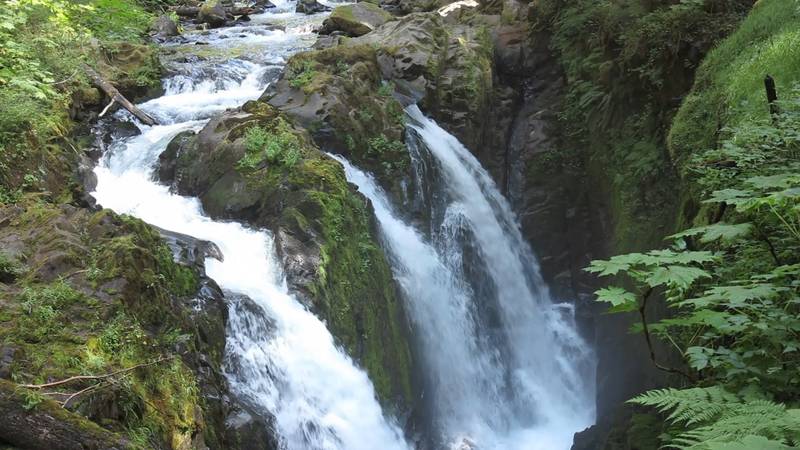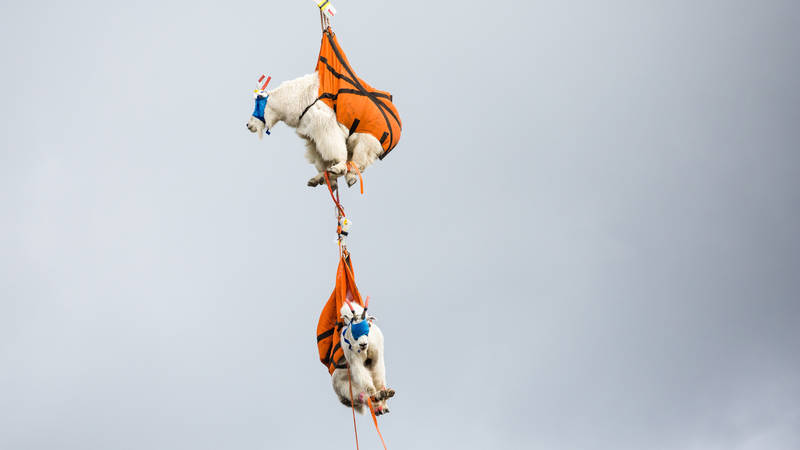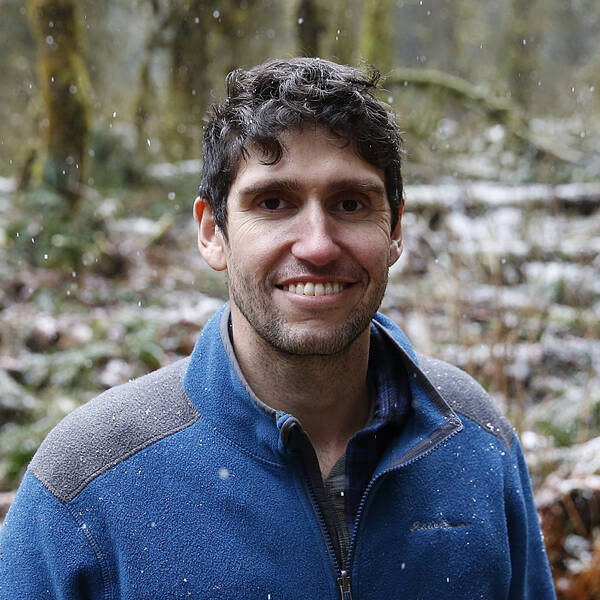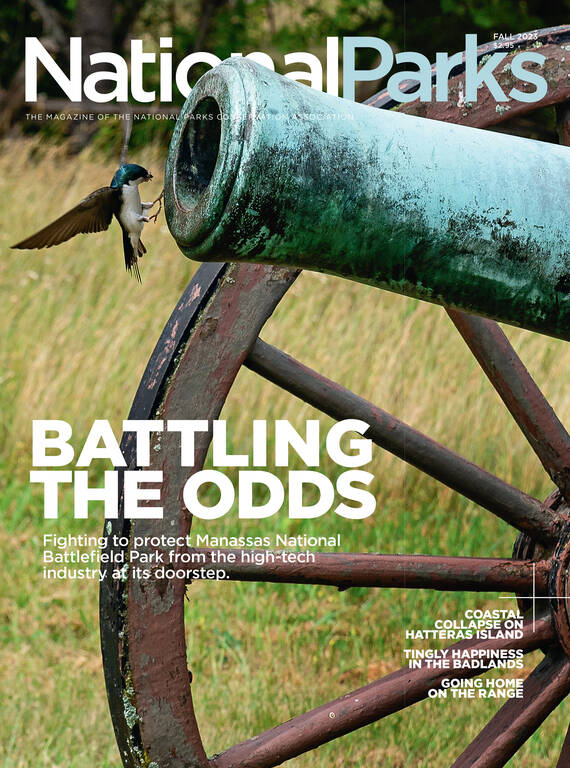Fall 2023
A Clam Conundrum
Olympic’s razor clam population has been struggling for years. Is disease to blame?
The die-offs happen every few years, in grisly and odiferous fashion. Rafts of razor clams pile up on Kalaloch Beach, the 4-mile stretch of sand that hugs Olympic National Park’s western coast, accumulating along the wrack line like flotsam. Some turn up flaccid and gooey, tissues spilling listlessly from long, narrow shells. Others arrive as empty cases, their innards having been scavenged by gulls. In the worst years, tens of thousands can wash ashore.
For years, biologists with the National Park Service, the state of Washington, the Quinault Indian Nation and the Hoh Tribe have sought to understand the die-offs. Each summer, they pump seawater into sections of beach, liquefying the sand and impelling clams to float to the surface, where they can be measured and counted. Few Kalaloch clams, they’ve found, survive into adulthood these days. “The average size of adult clams is getting smaller and smaller,” said Steven Fradkin, a coastal ecologist at Olympic. “And it’s basically because they’re just not living long enough to grow.”
The clam crisis began in the summer of 1983, when Pacific razor clams — bivalves that burrow into sandy intertidal zones from California to Alaska — inexplicably vanished from Washington’s coasts. The previous year, scientists had estimated that 20 million clams inhabited the state’s beaches; now their digs turned up nothing but sand. “We have seen drop-offs in population before, but never anything as dramatic as this,” one official told reporters. Before long, a stunning 95% of Washington’s razor clams had disappeared.
Making sense of the die-off fell to Ralph Elston, a shellfish researcher who examined the gills of some 2,000 razor clams from the affected beaches under a microscope. It was immediately obvious to Elston that something was wrong. Enormous bacteria, larger than any then known to science, had infiltrated the nuclei of the clams’ cells, swelling them to monstrous proportions. When the membranes of the engorged cells burst, countless new bacteria spilled forth, perpetuating the cycle of infection. For the bacteria, it was an ingenious survival strategy; for the clams, which use gills both to breathe and to filter food particles from the water, it was disastrous.

An Insider’s Guide to Olympic & Beyond
Can’t decide between glacier-capped mountains, lush rainforests and wild seashores? Olympic National Park has them all, and more.
See more ›“There really wasn’t any precedent,” Elston recalled. He called the bizarre new organism Nuclear Inclusion X — NIX, for short.
As the years passed, NIX seemed to fade away, and clam numbers on most of Washington’s beaches recovered, including on Kalaloch, where thousands of clammers once flocked annually to gather the Olympic Coast’s bounty. But in 2006, Kalaloch’s clam population cratered again and continued to behave erratically in the years that followed. Bumper crops of baby clams occasionally pockmarked the sand; in 2015, for instance, the Park Service estimated that a whopping 138 million young clams settled on Kalaloch. But bigger clams — those larger than 3 inches, the minimum length for harvest — remained scarce, and dying clams soon began to wash up once more. When researchers surveyed the beach in 2016 and 2017, they found that nearly all of the babies had died before reaching adulthood.
We got roundly thrashed by the public for opening a dig on a beach with such puny little clams.
As Kalaloch’s clams suffered, the Park Service took action to protect the survivors, including by limiting or prohibiting recreational clamming nearly every year since 2006. (The park’s recreational closures don’t affect subsistence harvest by Native Tribes such as the Quinault and Hoh, whose members have the right to gather clams from Kalaloch and other beaches within their traditional territories.) At first, Fradkin said, locals were peeved, but not even avid clammers want to dig up 2-inch pipsqueaks. When the park briefly permitted a test harvest in 2015, the reaction was dismay: “We got roundly thrashed by the public for opening a dig on a beach with such puny little clams,” Fradkin said.

Goats Go Home
Olympic National Park’s nonnative mountain goats are being rounded up and shipped to the Cascade Mountains.
See more ›Although Fradkin suspected that NIX was primarily to blame for the minute mollusks, other forces were hard to rule out. Maybe the region’s recovering sea otters were scarfing down adult clams, or ocean acidification caused by excess carbon emissions was impairing their ability to grow shells. A 2020 study that examined clams along eight Washington beaches also found that Kalaloch’s bivalves contained the most microplastics, perhaps because of its exposure to pollution from Seattle or the shipping industry.
Recent research, however, strongly suggests that NIX is indeed the main culprit. In 2022, a group of scientists published a study showing that, while most Washington razor clams carry NIX, those at Kalaloch are infected with roughly 10 to 1,000 times more bacteria than clams elsewhere. The researchers also drew upon years of surveys to show that young Kalaloch clams had by far the lowest survival rates in the state. This evidence, along with study of the tissue, seem to indicate that NIX is killing young clams before adulthood. “Kalaloch had consistently higher infections and observations of the gill cells bursting open, and it’s the only one of these beaches that seems to have these consistently failing cohorts of clams,” said Maya L. Groner, a disease ecologist at the Bigelow Laboratory for Ocean Sciences in Maine and the study’s leader.
Yet the questions about NIX still outnumber the answers. For example, why does Kalaloch have such astronomical infection rates compared to other beaches? Although Fradkin and Groner are quick to admit they don’t know, they speculate that it may have to do with Kalaloch’s position along the Olympic coast: Beaches farther south have different nearshore water movement patterns, and a plume of freshwater that spills from the Columbia River may protect those areas from marine pathogens.

National Parks
You can read this and other stories about history, nature, culture, art, conservation, travel, science and more in National Parks magazine. Your tax-deductible membership donation of $25 or more entitles…
See more ›Another burning question: How might the decline of Olympic’s razor clams ripple through the ecosystem? The Olympic Peninsula is an underwater biodiversity hotspot, home to more than 750 marine invertebrates and seaweeds, from basket stars to sea cauliflower — more species than any other stretch of the Pacific Coast. Razor clams, in their quiet, stolid way, play a pivotal role within that extravagant littoral ecosystem. Clams improve water quality by sifting algae and other particulates through their gills, and their own bodies feed animals from shorebirds to coyotes. Rarely do we think of shellfish as keystone species, yet razor clams are no ordinary bivalve. “They’re a really important link in the food web,” Groner said.
And then there’s the most vexing mystery of all: Why did NIX first pop up in the 1980s, and why has it lingered? One theory, raised by Fradkin, is that humans have fundamentally altered the structure of marine ecosystems. As commercial fishing has depleted the ocean of tuna, salmon, rockfish and other large predators, some food webs have suffered “microbialization” — a shift from a community run by big, backboned animals to one dominated by microorganisms. Perhaps NIX has profited from a similar downsizing, or from warming ocean temperatures that have stressed clams’ immune systems. Either way, the pathogen may exemplify the havoc we’ve wreaked upon our oceans — and portend more transformations to come. As Fradkin put it, “This is just one of an endless grab bag of weird changes that we’re going to be seeing through our lifetimes.”
About the author
-
 Ben Goldfarb Author
Ben Goldfarb AuthorBen Goldfarb is the author of "Crossings: How Road Ecology is Shaping the Future of Our Planet" and “Eager: The Surprising, Secret Life of Beavers and Why They Matter.”


